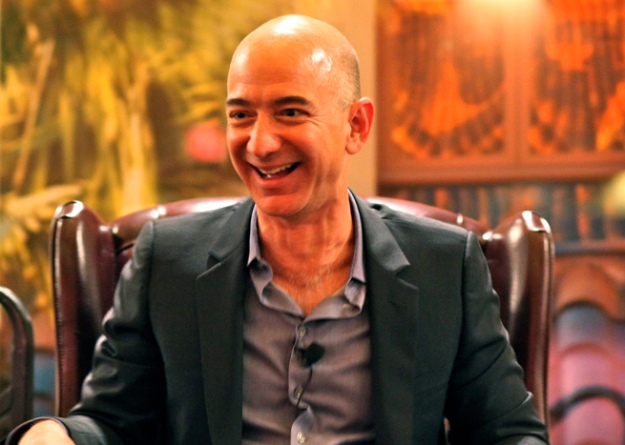
Photo (cc) 2009 by Dan Kennedy
Previously published at WGBHNews.org.
It has been an extraordinary few weeks for The New York Times.
From an outcry over a headline that blandly reported President Trump’s denunciation of racism in El Paso without acknowledging his own history of racist comments, to the demotion of an editor for several racially clueless tweets, to a fraught meeting with the staff called by executive editor Dean Baquet, the Times has found itself in an unaccustomed position: under fire from its core audience of liberal readers.
In sifting through Baquet’s remarks as well as those of the Times’ critics and defenders, it strikes me that the dispute is over two conflicting views of journalism’s role in covering a uniquely awful and dangerous presidency. The two sides are talking past each other, in large measure because much of what they say sounds similar. That is, they are on parallel tracks that never quite meet.
The Baquet side is that the Times is aggressively covering a terrible president, and is now in the midst of shifting from the Russia investigation to race. In this view, the coverage has been relentlessly harsh and negative (and accurate) but based on traditional journalistic values such as the respect accorded any president and the reality that Trump’s supporters need to be understood and explained.
“Our role is not to be the leader of the resistance,” Baquet said at the town hall meeting. In fact, that’s pretty much the same view expressed by Washington Post executive editor Marty Baron when he said, “We’re not at war with the administration, we’re at work.” Like many other observers, I give the Post higher marks than the Times in not normalizing this most abnormal of presidents. But, fundamentally, Baquet and Baron are on the same page.
The critics’ view is that even tough-minded accountability journalism is not enough for a president who regularly expresses racist opinions and enacts racist policies, who gladly accepted foreign intervention in the 2016 election, and who is undermining democratic norms through his lies, his attacks on the media, and his false claims that the electoral system is rigged against him.
As Ashley Feinberg put it in Slate, “the problem for the Times is not whether it can navigate social-media controversies or satisfy an appetite for #resistance-based outrage, both of which it can tell itself are not a newspaper’s job to do. It’s whether it has the tools to make sense of the world. On this point, Baquet was not reassuring or convincing.”
Liberal criticism of the Times may have reached the point of absurdity with Sunday’s unsparing profile of Stephen Miller, the architect of Trump’s thuggish anti-immigration policies. The headline in the print edition, “Shift Against Immigration Lifted a Young Firebrand,” drew howls from the left for not clearly labeling Miller a racist. The comedian Frank Conniff tweeted: “NY Times today called Stephen Miller a ‘young firebrand.’ Also once described Norman Bates as the ‘reclusive iconoclast of the hospitality industry.’”
In fact, the headline wasn’t nearly as bad as the one from El Paso that caused such an uproar earlier this month: “Trump Urges Unity Vs. Racism.” And, as with that first headline, the digital version was better, if more neutral than Trump critics might like: “How Stephen Miller Seized the Moment to Battle Immigration.” Besides, the story, by Jason DeParle, was first-rate.
The real issue over the two headlines may be the declining importance of the print product as well as the difficulty of writing good headlines in small spaces. As Baron once said, “ I mean newspaper headlines are terrible, right? They all have to be constrained within column sizes, so if you have a one-column head it’s all headline-ese. People don’t speak in headline-ese.”
There are larger forces at work in the liberal critique of the Times as well. As New York University journalism professor Jay Rosen observes, the Times, like all newspapers, is far more dependent on revenues from its readers as it shifts its business model from advertising to digital subscriptions. And many of those customers have taken to social media to let the Times know it when they don’t like what they see.
More to the point, the Times may very well have gotten Trump elected because of its obsession with Hillary Clinton’s use of a private email server for official business. The Times’ coverage of the email story reached its ludicrous apogee with an over-the-top front page after then-FBI Director James Comey announced he had reopened the investigation just before the election — a blow from which her campaign did not recover, even after Comey said “never mind” a week later.
In Rosen’s view, the Times’ coverage of Clinton amounts almost to an original sin, and the paper has never come to terms with its readers — who, he writes, “are appalled by Trump and want to see his dark sides further exposed. They want the Times to be tougher on his supporters and more relentless in calling out his lying, his racism, his misogyny, his xenophobia. They want Times journalists to see what they see — an assault on democratic institutions — and to act accordingly. And they want a reckoning with the coverage of Hillary Clinton in 2016 because they know that somehow this is in the way of all other things.”
Of course, the reason that the Times has come under fire from liberals is that they see it as their paper. Whatever criticisms they give voice to are mild compared to the vitriol from the right — as we’ve experienced in recent days with the reaction of Newt Gingrich and others to the Times’ 1619 Project, marking the 400th anniversary of slavery in what became the United States. The 1619 Project promises to be a landmark achievement for the Times, which makes it all the more appalling that right-wing critics would rather defend white supremacy than come to terms with slavery’s legacy.
As Baquet said during the meeting with his staff, “Look, we are scrutinized. I ran another newspaper [the Los Angeles Times]. I’ve never seen anything like this. We are scrutinized more than any other news organization in the country, in the world probably. To be frank, some of that comes with being the biggest and, I would argue, the best. And as hard as it is to do this, I think we have to accept it.”
Baquet is right. As good as The Washington Post and The Wall Street Journal are, the Times is still our best, most comprehensive general-interest newspaper. It is far from perfect. I’m still angry about the way it covered the run-up to the war in Iraq, the Whitewater non-scandal, and, yes, the 2016 campaign. If you’d like to go back a century, Walter Lippmann wrote that it blew the Russian Revolution and its aftermath as well.
But the Times’ journalistic values — offering a tough but straight report on what its editors have judged to be the most important news of the day — are always going to clash with the wishes of some of its audience to see their opinions and beliefs affirmed rather than challenged.
The Times has gone too far in normalizing Trump and Trumpism, and it often falls short on tone and emphasis. But you know what? We can adjust for that. It’s worth it.
Talk about this post on Facebook.









